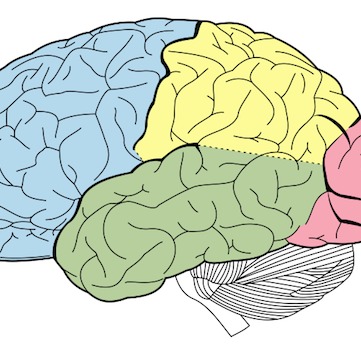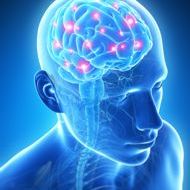Hell, no. Fantasies sap the energy you need to achieve your goals:
Positive fantasies allow people to mentally indulge in a desired future. Whereas previous research found that spontaneously generated positive fantasies about the future predict poor achievement , we examined the effect of experimentally induced positive fantasies about the future. The present four experiments identify low energy, measured by physiological and behavioral indicators, as a mechanism by which positive fantasies translate into poor achievement. Induced positive fantasies resulted in less energy than fantasies that questioned the desired future (Study 1), negative fantasies (Study 2), or neutral fantasies (Study 3). Additionally, positive fantasies yielded a larger decrease in energy when they pertained to a more rather than a less pressing need (Study 4). Results indicate that one reason positive fantasies predict poor achievement is because they do not generate energy to pursue the desired future.
Source: “Positive fantasies about idealized futures sap energy” from Journal of Experimental Social Psychology, Volume 47, Issue 4, July 2011, Pages 719-729
Mens sana in corpore sano – a sound mind in a sound body. Many of us take this to mean that the soundness of the mind depends on the soundness of the body. But when the Roman poet Juvenal first coined this phrase, almost 2,000 years ago, he seems to have had the opposite in mind: the health of the flesh depends on the excellence of the thinking and feeling part. The purpose of developing virtues such as moderation is not primarily to enable us to lead longer, healthier lives and spend fewer of our days in a state of sickness or discomfort. Instead we aim first to become better people. Goodness is its own reward, and one of the byproducts of goodness is better health.
Isolation, mistrust, resentment, greed, and fear are all bad for us, not primarily because they render us more likely to develop cancer or suffer a heart attack or stroke, but because they undermine our capacity to live. The interests of the body are best served not by designated drivers and rigidly enforced diet plans, but by organizing our days so that each of us brings more humanity into the world. Health is not the most important thing in life. It is primarily a byproduct of the pursuit of the most important things life has to offer.
Our Darwinian age tends to see life as a struggle against scarcity to survive, but in fact life for most of us life is characterized less as survival of the fittest than flourishing of the wisest. Health is not just what is happening inside the body of any particular person. Instead it is also what is going on collectively. How aware are we of one another? How committed are we to one another? How much of our hope and ambition for every day is bound up in an ongoing commitment to make a difference in the life of another person?
It is not found in a bottle, a pair of jogging shoes, or a juicer. The highest and best medicine, the only one that can truly suffuse and elevate everything else, is joy. Joy is life-affirming, life-restoring, and life-enhancing. Joy, and only joy, brings us truly and fully to life.
Our own health, the health of those around us, and the health of the nation depends less on what policymakers in Washington do or don’t do and more on the choices each of us makes. Do we know that we are here for a reason, that we are called to important work, that the world is beckoning us to share the very best we have to offer? Undue focus on our own health makes us less than we are meant to be.
Achieving mindfulness through meditation has helped people maintain a healthy mind by quelling negative emotions and thoughts, such as desire, anger and anxiety, and encouraging more positive dispositions such as compassion, empathy and forgiveness. Those who have reaped the benefits of mindfulness know that it works. But how exactly does it work?
There is a measurable benefit that people could achieve through body-mind meditation, especially involving an effective training regimen.
Researchers at Brigham and Women’s Hospital (BWH) have proposed a new model that shifts how we think about mindfulness. Rather than describing mindfulness as a single dimension of cognition, the researchers demonstrate that mindfulness actually involves a broad framework of complex mechanisms in the brain.
The researchers identified several cognitive functions that are active in the brain during mindfulness practice. These cognitive functions help a person develop self-awareness, self-regulation, and self-transcendence (S-ART) which make up the transformative framework for the mindfulness process.
The S-ART framework explains the underlying neurobiological mechanisms by which mindfulness can facilitate self-awareness; reduce biases and negative thoughts; enhance the ability to regulate one’s behavior; and increase positive, pro-social relationships with oneself and others-all-in-all creating a sustainable healthy mind.
The researchers highlight six neuropsychological processes that are active mechanisms in the brain during mindfulness and which support S-ART. These processes include 1) intention and motivation, 2) attention regulation, 3) emotion regulation, 4) extinction and reconsolidation, 5) pro-social behavior, and 6) non-attachment and de-centering.
In other words, these processes begin with an intention and motivation to want to attain mindfulness, followed by an awareness of one’s bad habits. Once these are set, a person can begin taming him or herself to be less emotionally reactive and to recover faster from upsetting emotions.
We’ve long known that soft candle light generally triggers a gentler mood, and grey skies can make us more gloomy. Some people tend to be depressed in the winter, when the sun sets early.
Researchers at the German Fraunhofer Institute are now testing what kind of moods are associated with colored lighting. They found out that red light has more of a relaxing effect that will make us want to lie down or go to sleep. It’s the same red tones that appear on the sky at sunset. For our hunter and gatherer ancestors who lived mostly outdoors this was the signal to retire into a sheltered space.
In contrast, blueish light will wake us up, make us more alive and increases the drive to move. Yellow is said to increase concentration.
Research concludes that when workers in an office were forced to work in a space without windows, their levels of tiredness were much higher than of those who were exposed to daylight.
I grew up when video games were a brand-new form of entertainment. I remember seeing Pong for the first time and thinking it was the cheapest animated show I had ever seen. Once I realized that it was an interactive game and that I could control what was happening on the screen, I was captivated. A love affair was born.
In 2008, John Lasseter, the chief creative officer for Walt Disney and Pixar Animation Studios, asked if I would be interested in joining Disney as a director. […]
He suggested that I think about developing a story set in the world of video games. The idea of a video-game movie had been floating around Disney Animation for at least 10 years, though no one had been able to crack a story. So here I was being offered the opportunity to combine my loves at the greatest animation studio in the world. I thought I had died and gone to heaven.
For four years, I lived and breathed the world of video games. The team spent work hours playing games — from Donkey Kong to Halo to Mario Kart — all of which would heavily influence what eventually became “Wreck-It Ralph.” And while I always believed in the film, I had days when I wondered if it would resonate with anyone outside the walls of Disney Animation.
Having spent the past eight weeks traveling the world — from Paris to Buenos Aires to Sydney, Australia — I can tell you that the amazing thing is how universal video games are. And while the movie has struck a chord with all ages, it has really hit home with people in their 30s, 40s and 50s, who reflect back on the untold hours they spent in arcades. I realize that I was not alone back then.
Stunning Photos of Cities Without Light Pollution
There are many advantages to city life, from conveniences like 24-hour delis and reliable public transportation to all of the culture that’s right at our fingertips. But there’s one thing that’s sadly missing from our lives: starry skies. In Thierry Cohen’s thought-provoking series Darkened Cities, which we spotted thanks to Visual News, we get to see what various cityscapes worldwide would look like minus all of the light pollution.
The Paris-based photographer’s work is very precise; the skies that he superimposes into his photos are taken from locations that are situated on the same latitude as the original cities, and shot at the same angle. The resulting images are beautiful, but there’s something apocalyptic about them too — especially shots of New York City, which recall photos of Lower Manhattan in the wake of Hurricane Sandy. Click through to see what some of the world’s brightest cities look like when the lights are off and the stars come out to play.
Back in 1890, when the “science of mind” was fresh and new, it captured the imagination of a vast range of thinkers: philosophers, alienists, neurologists, psychologists, as well as the new human or social scientists. The great William James, who named the field and was the first to talk of the “stream of consciousness” of subjective life, also noted in his Principles of Psychology: “Perhaps the greatest breach in nature is the breach from one mind to another.”
The passage of 120 years has done little to help us leap that breach or to make the subjective life transparent. But in the wake of a period of rampant individualism, with its noisy excess of desiring, getting, and spending, the scientists of mind, in all their initial broad range, are once more trying. They want to assert that “selfishness” is not what humans are about in genes or teams, and that happiness needs redefinition. Attempting to explain us better to ourselves, they remind us that without other minds, there wouldn’t be what only seem to be our own in the first place.
The top ten:
Missing Out: In Praise of the Unlived Life by Adam Phillips […] muses on our unlived lives, the ones that shadow us with their lost delights, and wonders whether frustrations may not make us better able to live our pleasures than do seeming satisfactions. Greed, he notes in a parenthesis, is “despair about pleasure”.
The Shrink and the Sage by philosopher Julian Baggini and psychotherapist Antonia Macaro[…] recombine two fields that had grown distant to ponder what might make the good life and breach gaps. Aristotle’s “mean” sets the tone.
The Antidote by Oliver Burkeman […] steers us away from the tacky horrors of positive thinking […] travels through the hidden benefits of insecurity to the museum of failure, finally to embrace mortality.
Quiet by Susan Cain […] sings the power and delights of introversion in a raucous world.
Together by Richard Sennett […] digs into history and examines the cooperative skills we humans possess. In groups or tribal collectivities, solidarity that insists on everyone’s being in agreement won’t provide the necessary glue. Sennett wants both to allow complex differences and engender cooperation through a craft of togetherness that includes listening, working and ritual gatherings.
The Better Angels of Our Nature by Steven Pinker […] argues that we’ve grown more civilised and less violent than our prehistoric, certainly pre-Hobbesian, forebears – something I’ve long wanted to believe but found it hard to while rockets, bombers and drones do their worst.
The Righteous Mind by Jonathan Haidt: [d]igging for the genesis and workings of morality in humans, he turns in this adventurous book to tribal life and animal behaviour, as well as the ancients and American politics.
Beyond Human Nature by Jesse J Prinz shows how on most of the points on which evolutionary psychologists like to reflect, humans are shaped far more by their culture than by nature. Examining knowledge, language, thinking, feeling and values, Prinz shows that people from different cultures perceive differently, are driven to, and suffer, mental illness in various ways, and find a wide range of mating partners attractive, until globalised values arrive to standardise taste.
The Science of Love and Betrayal by Robin Dunbar [… examines] love and mating, perhaps the best way to bridge the great gap of separate minds, let alone bodies. If you prefer your wooing with data – on hunter gatherers, voles and the neurohormone oxytocin.
Are You My Mother? by Alison Bechdel […] if you want the complexities of love in a family story that comes in bold graphic form and contains a host of psy-knowledge and Winnicottian lore.
- This Will Make You Smarter: New Scientific Concepts to Improve Your Thinking by John Brockman […] a formidable anthology of short essays by 151 of our time’s biggest thinkers on subjects as diverse as the power of networks, cognitive humility, the paradoxes of daydreaming, information flow, collective intelligence, and a dizzying, mind-expanding range in between. Together, they construct a powerful toolkit of meta-cognition — a new way to think about thinking itself.
- Tiny Beautiful Things: Advice on Love and Life from Dear Sugar [by Cheryl Strayed …] all of Sugar’s no-bullshit, wholehearted wisdom on life’s trickiest contexts — sometimes the simplest, sometimes the most complex, always the most deeply human.
- Where the Heart Beats: John Cage, Zen Buddhism, and the Inner Life of Artists by Kay Larson constructs a remarkable intellectual, creative, and spiritual biography of Cage — one of the most influential composers in modern history.
- As Consciousness Is Harnessed to Flesh: Journals and Notebooks, 1964-1980 by Susan Sontag, the second published volume of her diaries, offers an intimate glimpse of the inner life of a woman celebrated as one of the twentieth century’s most remarkable intellectuals, yet one who felt as deeply and intensely as she thought.
- Breakthrough!: 90 Proven Strategies to Overcome Creative Block and Spark Your Imagination by Alex Cornell […] a small but potent compendium of field-tested, life-approved insight on optimizing the creative process from some of today’s most exciting artists, designers, illustrators, writers, and thinkers.
- Why Does the World Exist?: An Existential Detective Story by Jim Holt [seeks] to tease apart the most central existential question of all — why there is a world, rather than nothingness, a question he says is “so profound that it would occur only to a metaphysician, yet so simple it would occur only to a child” — Holt pores through millennia of science and theology, theory by theory, to question our most basic assumptions about the world, reality, and the nature of fact itself, with equal parts intelligence, irreverence, and insight.
- The Power of Habit: Why We Do What We Do in Life and Business by Charles Duhigg [proposes] that the root of adhering to our highest ideals — exercising regularly, becoming more productive, sleeping better, reading more, cultivating the discipline necessary for building successful ventures — is in understanding the science and psychology of how habits work.
- The (Honest) Truth About Dishonesty: How We Lie to Everyone — Especially Ourselves by Dan Ariely asks a seemingly simple question — “is dishonesty largely restricted to a few bad apples, or is it a more widespread problem?” — and goes on to reveal the surprising, illuminating, often unsettling truths that underpin the uncomfortable answer.
- The Storytelling Animal by Jonathan Gottschall traces the roots, both evolutionary and sociocultural, of the transfixing grip storytelling has on our hearts and minds, individually and collectively.
- Quiet: The Power of Introverts in a World That Can’t Stop Talking by Susan Cain dissects the anatomy of this socially-induced guilt and delves deep into one of psychology’s most enduring tenets — that the single most important defining aspect of personality is where we fall on the introvert-extrovert spectrum — to break through the “long and storied tradition” of neatly mapping this binary division onto others, like submission and leadership, loneliness and happiness, settling and success.
A 2010 study of 2,250 adults by two Harvard University psychologists found that people’s minds wander an astounding 47 per cent of the time. It concluded that “a human mind is a wandering mind, and a wandering mind is an unhappy mind.”
Wandering minds also compromise the quality of people’s work. “High-quality attention is the productive basis for knowledge workers, and we do very little to cultivate that essential resource,” says Jeremy Hunter, a professor at the Peter F. Drucker School of Management in Los Angeles. Hunter is one of the leading teachers of mindfulness in the workplace, with clients like Toyota, Bank of America and Starbucks. “As a society, we have fundamentally ignored the value of attention.
“Mindfulness is a simple practice to cultivate attention,” he adds. “It teaches us to skilfully manage the forces that exist inside all of us. Mindfulness raises awareness of what’s going on inside of you, so you can better deal with what’s going on outside you. It’s the education we never got.”
With practice, we change the neural pathways in our brain. Scientists used to think our brains became hard-wired early in life. Now we know our brains change and develop all our lives in response to how we think, a phenomenon called neuroplasticity.
Hunter says business is still at an early stage in recognizing the value of attention and mindfulness training. However, “the conversation is different now than it was 10 years ago. Then, it was not a foregone conclusion that managing yourself was important. Today, people are more open and heads readily nod.” He adds that “it took about 60 years for the West to optimize industrial work. After that we had enormous productivity gains. We’re about 40 years into a widespread knowledge economy.”
Hunter asserts that mindfulness can provide the foundation for both huge productivity gains for employers and a more socially responsible form of capitalism.
_ Synopsis: _ How awe — both beautiful and terrible — causes us to freeze in our tracks.
Five distinct physiological signals mark the freeze response: gasping, breath-holding, lowered chin with mouth slightly opened, immobility or stiffness and reduced blinking. Taken together, this physiological cocktail helps steady the body, an adaptive response in a situation where the danger is fixed and the slightest movement means death.
If you’ve determined that the potential danger is manageable a distinct emotion sometimes ensues: awe. […] The danger looms, but your safety from it elicits a sense of awe.
This is the paradox of awe: it combines fear with wonder and pleasure. The word’s oxymoronic etymology illustrates this nicely. Awe’s archaic root is áchos, which in Greek means pain or the “power to inspire fear or reverence,” as in that person or thing is _aw_ful. At the same time, something can be _aw_fully good and _aw_fully bad. We react to good and bad events with the exclamation “aw,” as in “aw, Dad, that’s not fair,” and “aw, look at that cute baby.” The word _awe_some denotes things or people that are impressive, but not necessarily good. The power of an atomic bomb is awesome, but so is the opening ceremony at the Olympics. The same paradox arises in other languages. In Spanish, for example, awe is translated as temor (fear, apprehensiveness) or admiración (admiration, wonder).*
If Silva’s assertion is correct then it must likewise demonstrate that 1) awe does inform our life with a sense of cosmic significance and 2) that that sense does, in fact, make us work harder to persist and survive.
Unfortunately, a dearth of research on awe prevents us from answering either of these. William James studied awe in the early 20th century. In Varieties of Religious Experience he shows that religious-inspired awe contributes to a feeling of peace and unity with one’s self. Years later Abraham Maslow demonstrated that awe is of characteristic of peak-experiences. In the last decade Jonathan Haidt and colleagues conducted several empirical studies examining awe. That’s about it.
I suspect that the more plausible explanation is that the type of awe we describe as “life-reaffirming” or “aesthetically inspiring” is a byproduct of the freeze response. If this is true, the job of the artist is to trick your brain into thinking that it is in a dangerous situation, only to deliver a sense of relief and, ultimately, awe.





